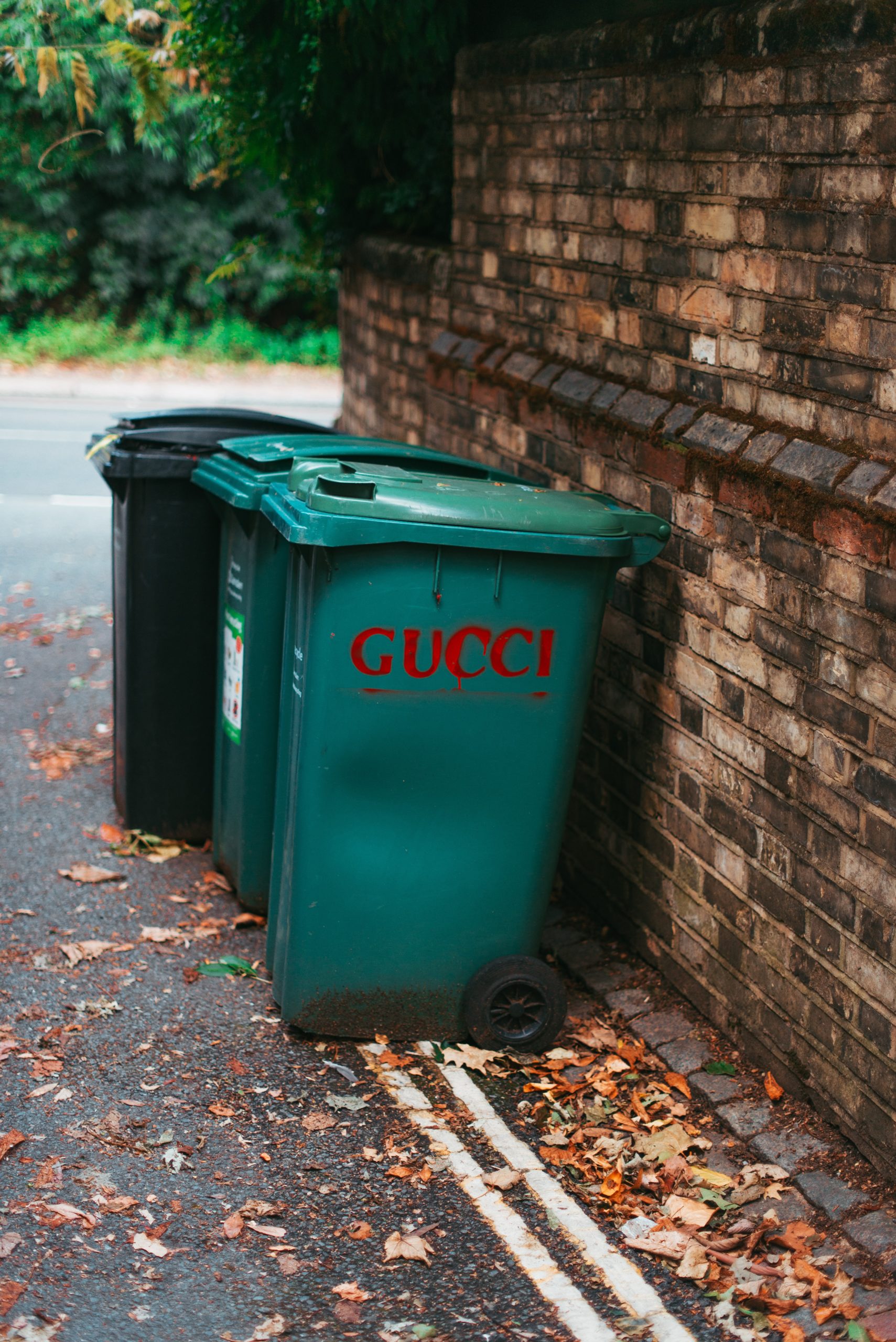Written by Jojo Guo
Photo by Charlotte Harrison on Unsplash
CW: Discussions of class
In the summer of 2017, I was back in my hometown in Guangzhou, China. A friend who was moving back to her hometown asked me to buy her some luxury fashion products with her remaining few hundred Yuan. She requested a belt from Gucci, but crucially – she wasn’t after the real one.
To put things into context, one Yuan is roughly 10p, and the only place you can find a Gucci product for less than £50 is the counterfeit wholesale market. This was an awe-inspiring experience: endless corridors of branded shoes and bags, leather belts mesmerizingly aligned on the wall like the streams of codes in the Matrix. Exhibited at the front of most stalls is a glass top counter, carefully containing the buckles of every major luxury fashion brand. Whether you are looking for a specific model, or prefer a bit of a mix and match, you will not be disappointed.
Since China’s ‘Open Door’ Policy began in 1978, many foreign companies such as Nike, Adidas, Burberry and more, relocated their factories to the mainland, looking to take advantage of their large workforce and low wages. In the early 1990s, western luxury stores started to pop up in China; its doors opening to new aesthetics that became symbols of wealth… and a step closer towards globalisation. However, the annual salary of a Chinese employee in 1995 – a mere 5500 Yuan – indicated that a majority of the Chinese population was not financially able to purchase these luxury products. Consequently, the combination of good manufacturing skills and these products’ marketing potential fuelled counterfeit production. By 2017, counterfeit sales amounted to $1.2 trillion worldwide – between 85% to 95% of these products are made in China.
Undoubtedly, pricing is the biggest factor when purchasing a counterfeit product over the original, but it’s certainly not its sole appeal. China is a country that has newly established itself as an economic superpower, but it is still navigating its way through the exponentially growing by-product of globalisation: westernisation. Along with the pressure of preserving some kind of cultural identity in modern China – status and wealth – plus the satisfaction of being part of a ‘trend’, are arguably the biggest driving forces of counterfeit purchasing.
In a research study conducted in 2012 in China, on a survey for counterfeit consumerism, many participants expressed the desire to fit in, and not to be left out from all the girls on the high street carrying the latest branded purse. Staying on-trend is, for some, an impossibly pricey commitment, hence the more ‘valuable’ substitution of a counterfeit. This choice is sometimes even preferred by affluent customers, who would only invest in genuine classic models that won’t go out of fashion. Others also mentioned the importance of portraying an image that signifies wealth and status, to ‘save face’ amongst others who are higher up in the social hierarchy.
Flashforward to today, this superficial symbol of wealth and conformity is no longer a mass pursuit in the country, and the general public’s awareness of ethical consumerism has increased considerably. However, counterfeit production isn’t getting closer to its end, with luxury fashion brands moving further away from the essence of luxury. As the journalist Dana Thomas describes: ‘Vuitton is the McDonald’s of the luxury industry’. With the infinite expansion of the market for luxury goods, comes the growing assurance for counterfeit manufacturers – and Louis Vuitton is for everyone.
In October 2020, a scandalous exposure of a so-called ‘Shanghai influencer community’ exploded on Chinese social media. The group claimed to be a space for young female influencers to share their experiences purchasing luxury products was in fact a channel through which luxury goods, real and fake, were shared, circulated, or rented amongst the girls for the sole purpose of taking ‘insta-worthy’ pictures. They strived for the image of a rich, privileged, and trend-leading young celebrity. When faced with countless criticisms online, a community member defended herself by saying: none of the goods were robbed or stolen but purchased with every hard-earned penny. To her, coming from a low income and less privileged background, drowned by the media influence that encourages materialism, fame and ‘like’ culture, she did nothing more than seek an experience that would be otherwise unreachable.
The identity and essence of many luxury fashion brands have changed and declined, partly owing to the persistence of counterfeit trading, but also to their own contradictory mass producing alongside claims of exclusivity. What used to be the name of a revolutionary individualist artisan, is now remembered as an excessively promoted logo. Thus, luxury fashion brands are struggling to confront their failure in the battle against counterfeit production across the world, desperate to preserve their ‘image’ with declining craftsmanship and pandering designs (e.g. Balenciaga’s Qixi festival handbag). Counterfeit manufacturers and consumers effortlessly undermine the aristocratic sentiments these brands used to represent, and their marketed image as a ticket to an illusional social status.
Thus, I browsed through Gucci’s official website, selected a belt with the classic double G buckle. Later that summer I visited Spain and gave my friend what she wanted. She was very pleased – it looked just like the real one.

